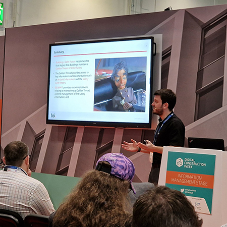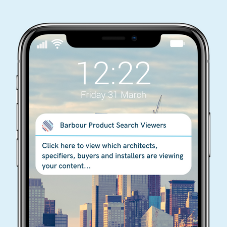FIS Technical Director Joe Cilia discusses the growing importance of an integrated approach to design and consistent product data to ensure compliance.
Let’s consider that buildings are made up of five supersystems:
• Foundations
• Structure
• Roof
• M&E
• Fit-out and interiors
Each supersystem, such as fit-out and interiors, include systems such as drylining made up of components such as plasterboard, stud and fixings, but to ensure the right components and systems are used and interface with other supersystems it's important to understand the data in each.
Component data is limited. For example, a plasterboard alone isn’t able to describe its performance, that can only be determined when it's used in a system. Some in the industry are still surprised to learn that there is no such thing as a ‘half hour plasterboard’. The board alone won’t provide fire resistance, it needs a framework, fixings and jointing to be tested together to provide a drylining system which is compliant, and it will only be compliant when its installed as per the supplier's instructions. Even then the interface with the other supersystems needs to be considered.
Drylining systems will interface with the structure, the envelope and the M&E, as well as other systems such as door sets and glazing. In each case the performance of the drylining is impacted by the performance of what it interfaces with.
Drylining includes addressing the following performance attributes:
• Acoustic
• Fire resistance
• Reaction to fire
• Robustness
• Air tightness
• Deflection
• Humidity
So, let's consider the interface with a structural beam along a compartment line which is required to provide a defined period of fire resistance including thermal resistance, air borne acoustic performance and accommodate building movement and possibly air tightness. Without further attention to the beam itself the performance of several attributes will fail, and that’s without any consideration to the services that are likely to partially pass though the wall, such as power sockets and switches or services such as pipes ducts dampers and cables.
Product data can be inconsistent in the information it contains and the way in which the data is provided.
The Building Safety Act 2022 (BSA) will ensure that systems are designed in conjunction with the systems and supersystems they interface with and that there is compatible compliant evidence for these junctions.
This can only come about through early collaboration with deep knowledge experts and competent people to ensure that there is compliance evidence, and again the BSA requires this evidence to be submitted and recorded at gateways and included within the ‘Golden Thread’ of information where the building is considered a ‘High Risk Building’.
Although the finer details of the Golden Thread haven’t been published at the time of writing (August 2023) we do know that data should be:
• Kept digitally
• Kept securely
• A building's single source of truth
• Available to people who need the information to do a job
• Available when the person needs the information
• Presented in a way that a person can use
Digital information can include:
Uniclass Code – is a unified classification system for the built environment covering all sectors and roles. Uniclass provides a mechanism to organise everything required for built environment assets and provides a logical code for each general item, which can be used by anyone to identify and refer to it.
Industry Foundation Classes (IFC) Is built on an open, international standard (ISO 16739-1:201837) and promotes vendor-neutral, usable capabilities across a wide range of hardware devices, software platforms and interfaces for many different use cases with the client’s requirements as set out in their exchange information requirements (EIR)
In order to provide a consistent approach, we need to understand how we describe things and what information we provide and in what structure.
Descriptions can be confusing, for example when is a screw a fixing or an anchor. This can only be resolved when a Data Dictionary which standardise the terms and enabling machine reading of properties is agreed and manufacturers provide information in Product Data Sheets (PDS) in a standardised format. Yet there are very few fully recognised Product Data Templates (PDT) so consistency across the construction industry is being looked at by a number of working groups as it is is a challenge at present.
The way in which we design, specify, supervise, construct and record what we do is changing for all buildings and not just High-Risk Buildings. FIS, which represent the Finishes and Interiors Sector, will be publishing guidance on the Building Safety Act, the Golden Thread and Digital Information Management in the coming months, as well as developing competence management plans.
For more information email info@thefis.org or visit www.thefis.org















